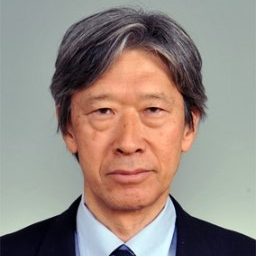Sports Fluid Mechanics
A special issue of Applied Sciences (ISSN 2076-3417). This special issue belongs to the section "Mechanical Engineering".
Deadline for manuscript submissions: closed (15 June 2022) | Viewed by 64842
Special Issue Editor
Special Issue Information
Dear Colleagues,
Recently, research studies on fluid mechanics of sports have been limited to sporting equipment, such as balls, and sporting events, such as swimming and ski jumping. However, given the recent trend in which a difference as small as 1/100 of a second can have a significant impact on the results of a competition, topics such as aerodynamics and hydrodynamics in sports have become main research interests in the fields of sport sciences, sport engineering, and sport technology. In addition, basic research in fluid mechanics and fluid engineering is often useful in improving sport performance and in providing a scientific approach to sport coaching.
We are inviting the submission of manuscripts to this Special Issue on “Sports Fluid Mechanics”. This Special Issue aims to cover sports fluid mechanics studies, including sports aerodynamics, sports hydrodynamics, and relevant sports sciences and technology. These important issues include but are not limited to the topics described in the keywords.
Prof. Dr. Takeshi Asai
Guest Editor
Manuscript Submission Information
Manuscripts should be submitted online at www.mdpi.com by registering and logging in to this website. Once you are registered, click here to go to the submission form. Manuscripts can be submitted until the deadline. All submissions that pass pre-check are peer-reviewed. Accepted papers will be published continuously in the journal (as soon as accepted) and will be listed together on the special issue website. Research articles, review articles as well as short communications are invited. For planned papers, a title and short abstract (about 100 words) can be sent to the Editorial Office for announcement on this website.
Submitted manuscripts should not have been published previously, nor be under consideration for publication elsewhere (except conference proceedings papers). All manuscripts are thoroughly refereed through a single-blind peer-review process. A guide for authors and other relevant information for submission of manuscripts is available on the Instructions for Authors page. Applied Sciences is an international peer-reviewed open access semimonthly journal published by MDPI.
Please visit the Instructions for Authors page before submitting a manuscript. The Article Processing Charge (APC) for publication in this open access journal is 2400 CHF (Swiss Francs). Submitted papers should be well formatted and use good English. Authors may use MDPI's English editing service prior to publication or during author revisions.
Keywords
- Sports aerodynamics
- Sports hydrodynamics
- Experimental fluid dynamics (EFD) in sports
- Computational fluid dynamics (CFD) in sports
- Flow visualisation in sports
- Physics of flow in sports
- Boundary layers in sports
- Fluid-structure interaction in sports
- Fluid transients in sports
- Turbulence in sports
- Education of fluid in sports
Benefits of Publishing in a Special Issue
- Ease of navigation: Grouping papers by topic helps scholars navigate broad scope journals more efficiently.
- Greater discoverability: Special Issues support the reach and impact of scientific research. Articles in Special Issues are more discoverable and cited more frequently.
- Expansion of research network: Special Issues facilitate connections among authors, fostering scientific collaborations.
- External promotion: Articles in Special Issues are often promoted through the journal's social media, increasing their visibility.
- e-Book format: Special Issues with more than 10 articles can be published as dedicated e-books, ensuring wide and rapid dissemination.
Further information on MDPI's Special Issue polices can be found here.





